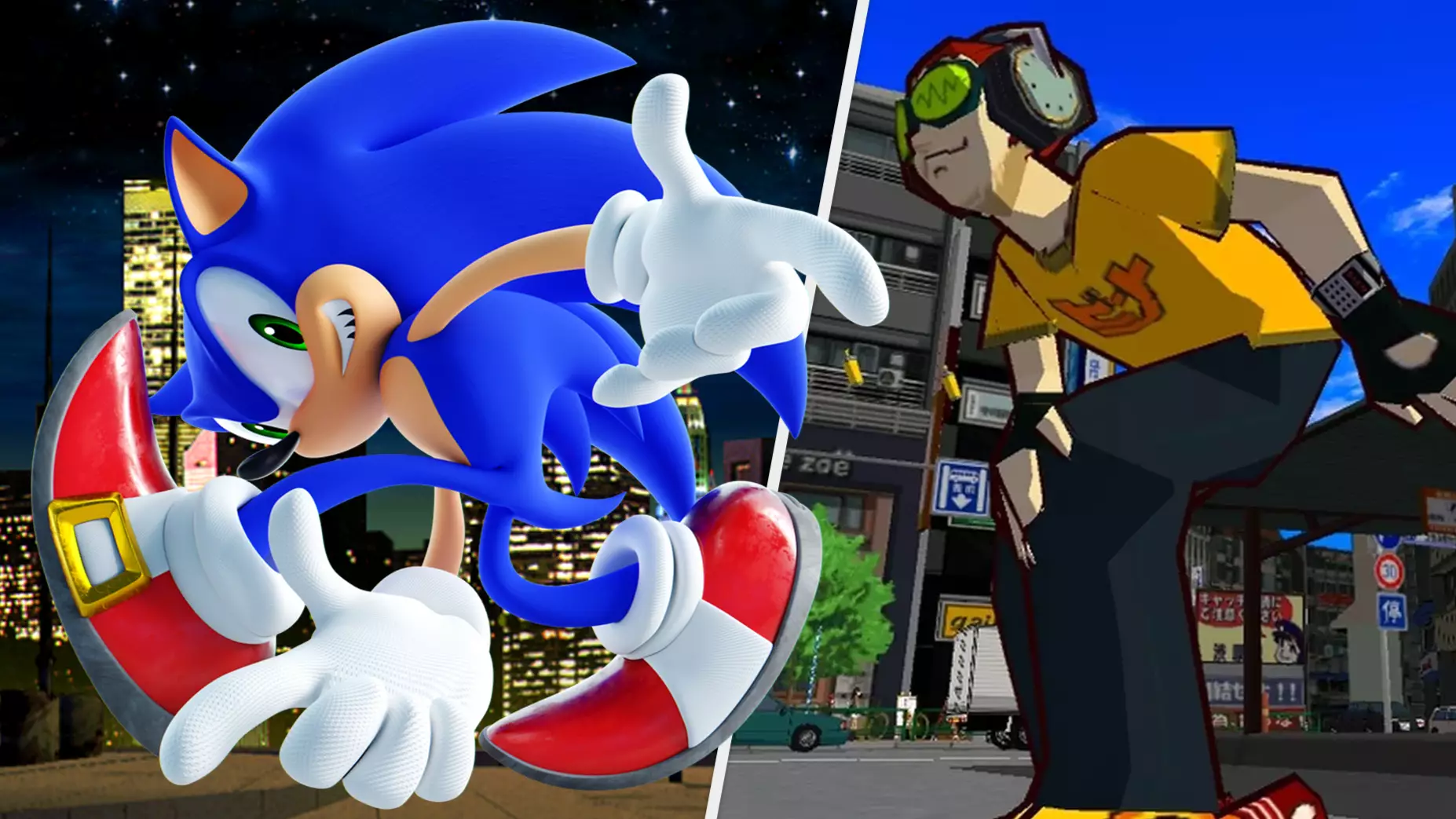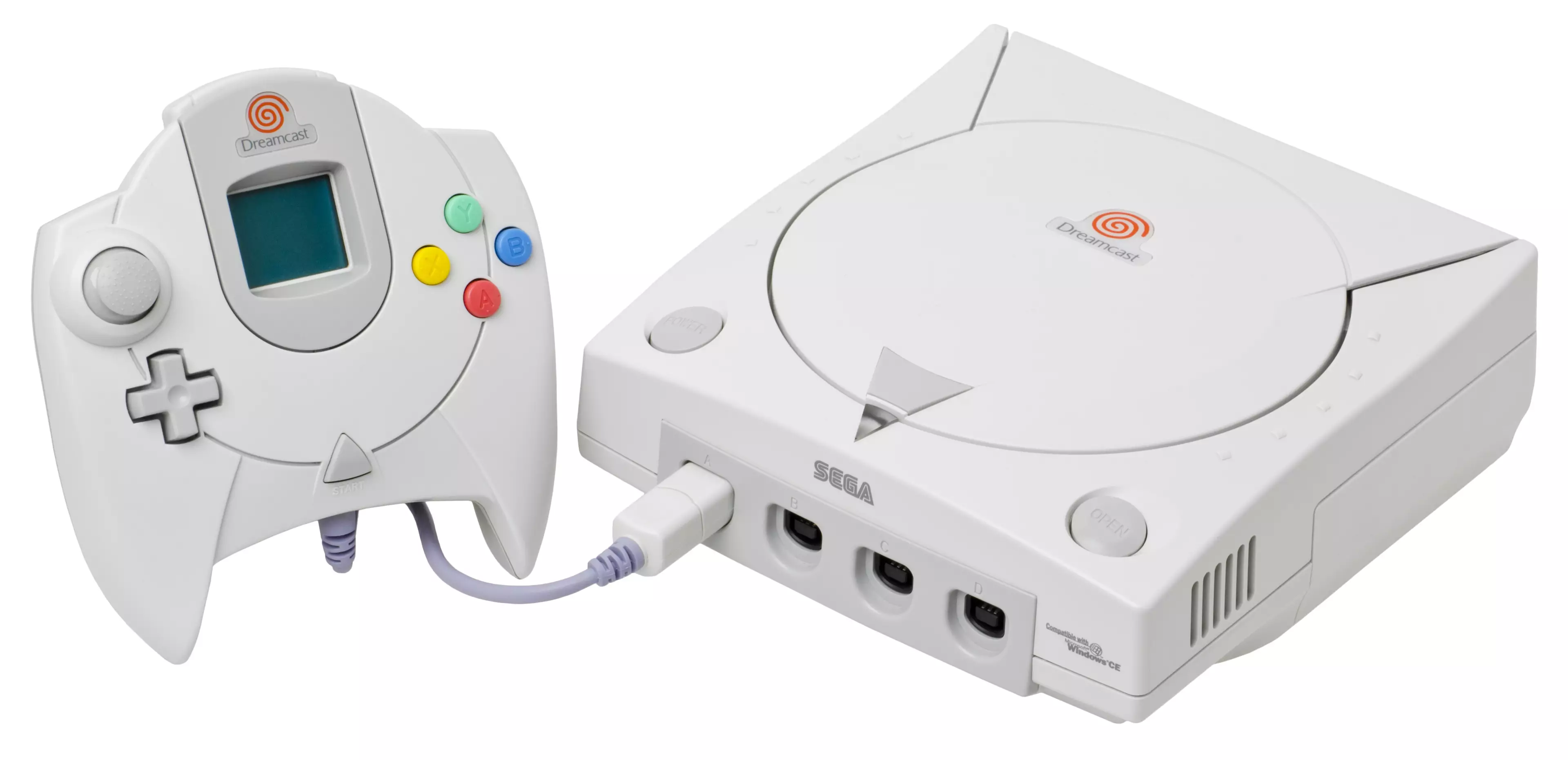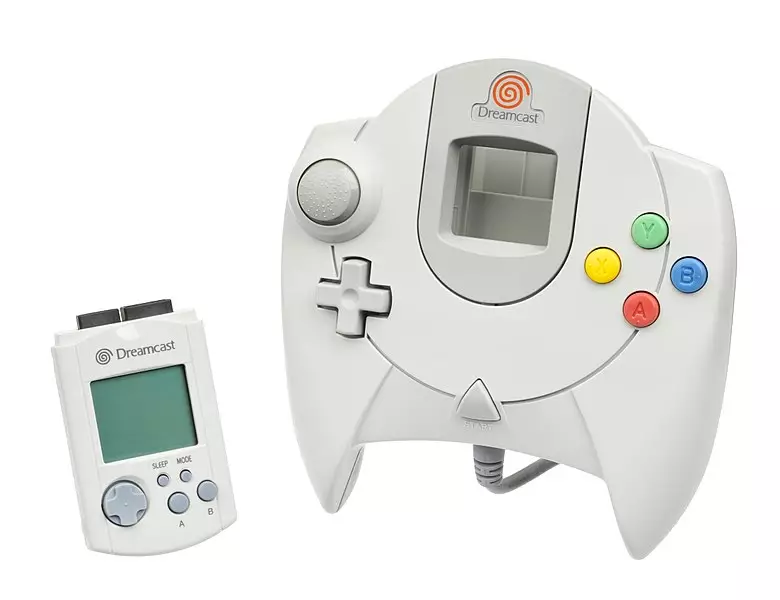
Update, 9/9/2020: Today is the 21st anniversary of the Dreamcast's US launch, so we've put this article out on our social platforms again. In case you're wondering why a piece from 2018 just popped up in your feed.
A couple of days ago, on 27 November, the SEGA Dreamcast celebrated its 20th anniversary. Widely regarded as a system ahead of its time, SEGA's final proper console first launched in its Japanese homeland in 1998, before coming to the US and Europe almost a year later.
Disappointingly, the Dreamcast was discontinued in no time at all, SEGA officially pulling the plug on it, and its entire console production operation, in March 2001. British players, then, only had about a year and a half with the system before it basically admitted defeat against the competition of Sony's PlayStation 2. It bowed out before the GameCube and Xbox had even entered the market.
Advert
RIP, gone too soon, press X to pay respects (it's the yellow one), etc... But there's no doubt that, with the benefit of hindsight, it's impossible to not see the Dreamcast in a very positive light.

With its pioneering out-of-the-box online connectivity (driving games like ChuChu Rocket! and Phantasy Star Online), voice chat with friends (and strangers!), limited second-screen functionality (those VMUs were really something) and a host of great arcade ports - at a time when arcade-quality gaming at home really meant something - the Dreamcast really was ahead of its competition.
Unfortunately for SEGA - already damaged by prolonging the lifespan of its 16-bit Mega Drive with the doomed 32X, and failing to really rival the PlayStation with its Saturn system - the Dreamcast just didn't connect with a mass audience. Sales of around 10 million worldwide spelled the end. But that's not to say that SEGA's swansong wasn't home to some amazing games.
Advert

On top of the aforementioned online hits, and arcade conversions like Crazy Taxi, Samba de Amigo and Soulcalibur - the latter showing third parties' willingness to support the system - SEGA hit a rare vein of creativity with the Dreamcast. Titles like the supremely surreal Seaman, the sci-fi musical Space Channel 5 and the keyboard-using Typing of the Dead showcased a level of creative freedom and risk-taking that few major games publishers were exhibiting.
And sure, maybe SEGA took a few too many risks, and paid the price. But no Dreamcast, no any of the games above or below. And with regards to the below, these are five titles that really helped to "make" the Dreamcast such a loved console, by those who took a punt on one - either around its launch or, like me, way too late to make a difference. Nevertheless, the classics never go out of style...
Advert
Shenmue (1999)
Yu Suzuki's ambitious amble around semi-rural Japan, driven by a sometimes saggy storyline of teenage vengeance and mysterious mirrors, cost SEGA a whopping $70 million (top estimate) to develop and market, making it the most expensive game ever at the time of its release. But what an impression it left on those who did play it - sadly, not enough to realise a profit on that extraordinary spend.
That the 2019-due Shenmue III is Kickstarter's most successful video game campaign is rooted in the remarkable world that this debut game presented - a three-dimensional, near-fully-explorable virtual environment full of characters with realistic-feeling routines and personalities. With combat taken directly from SEGA's excellent Virtua Fighter series, and a host of mini-games to distract you - playing as Ryo Hazuki - from the game's central quest of pursuit and revenge, Shenmue impressed massively on audio, visual and mechanical levels. That said, the game's introduction of quick-time events is arguably something the medium, quick to adopt them elsewhere, could have done without.
Advert
Shenmue was a real game-changer, in the way its game world didn't wait for the player to arrive in it, to appear alive. It almost felt like you didn't play the game at all - you just joined in, as it played out all around you.
Rez (2001)
Designer Tetsuya Mizaguchi had been at SEGA for a while, working on titles like SEGA Rally and Space Channel 5, before he made the game that'd truly crystallise his reputation as a creative apart from the pack. Rez is a music game, and a shooter, where action and rhythm is melded in a manner that's close to transportative. Indeed, in its 2016 Infinite remaster, played on PSVR, it's a fully enveloping experience, a surround-sound, 360-degree masterpiece. (Just thinking about Area X gives me tingles.)
Advert
But even in its original Dreamcast guise, Rez remains completely compelling. Mizaguchi wanted to create a full-body experience, a video game that could encourage rare sensations, affecting areas of the player's body otherwise untouched by the medium. And the beat-matching gameplay of Rez delivers on this, providing an experience that Mizaguchi intended to be comparable to a DJ building up their crowd. Levels escalate in visual and sonic intensity, bosses become crescendos, and while the AI-centric "plot" of the game is nonsense, the journey that Rez offers remains unbeatable.
Resident Evil - Code: Veronica (2000)
The first Resident Evil game to debut on a non-PlayStation platform, Code: Veronica began as a Dreamcast port of Resident Evil 2, before evolving into something unique. The development team at Capcom, headed up by producer Shinji Mikami, couldn't get Resi 2 playing nicely on SEGA's hardware, so took the (as it turns out, wise) decision to embark on something new, instead.
Set after the events of Resident Evil 2, and concurrently with those of 3, Code: Veronica took characters Chris and Claire Redfield away from the T-Virus hotspot of Raccoon City, and all the way south to Antarctica. Actually deemed to be the "true" Resi 3 by its creators, Code: Veronica proved to be one of the best-selling Dreamcast games released, comfortably shifting over a million copies. A drop in the ocean in Resident Evil series terms, sure, but a real success on a platform that struggled in the gaming marketplace.
Sonic Adventure (1998)
It's no massive surprise that the biggest-selling game on a SEGA console would star the company's blurry and blue mascot. And with almost two and a half million copies out there, it's Sonic Adventure that leads the way for Dreamcast software sales. The first 3D Sonic game - and, arguably, still the best - Adventure was almost a launch title for its platform, arriving just weeks after the Dreamcast's Japanese debut.
As a showcase for what the Dreamcast could do, visually, Sonic Adventure was a tour de force. Put it next to Super Mario 64, and it's clear that SEGA's iconic hedgehog leaps off the screen with a great deal more speed and style. And there's no doubt that alone helped SEGA shift a good many systems.
But a better game than Mario 64, Adventure was not. With a temperamental camera and some diabolical voice acting, Adventure has its flaws, which misty nostalgia does its utmost to obscure but can't quite succeed.
Nevertheless, Adventure was a pivotal release both for the Sonic series and SEGA, and it spawned a sequel, the Shadow-introducing Sonic Adventure 2, which actually released after the Dreamcast had been officially discontinued.
Jet Set Radio (2000)
Ask SEGA fans of, ahem, a certain vintage what Dreamcast-era game they'd love to see make a comeback on modern consoles, your Switches and PS4s and the like, and there's a strong chance of hearing the words "Jet", "Set" and "Radio" repeatedly.
Starring graffiti-spraying skaters in compact but open play spaces, Jet Set Radio feels incredibly of its time to play, mixing elements of Tony Hawk's Pro Skater with a narrative thrust of youthful rebellion. And yet, with its bouncing soundtrack and brilliantly bright visuals, which look sharp even on old-school CRT screens, it's a game that could easily feel at home beside more contemporary efforts like Sunset Overdrive and Splatoon.
Jet Set Radio is another example of SEGA appearing bolder, braver, with its first-party games than any other publisher of the time. It left a lasting impression, and while a sequel followed - 2002's Xbox-only Jet Set Radio Future - there is surely no doubt that a proper remake of the original Jet Set would go down a treat with the older corners of 2018's console crowd. By which I mean me, obviously. Bring it to Switch, you cowards.
---
Did you own a Dreamcast at the time, or pick one up in the years after its demise? Do any of the above titles rank amongst your own favourites on SEGA's ambitious final console? Let us know on Facebook or Twitter.
Featured Image Credit: SEGATopics: Sonic, Feature, Sega, Dreamcast, Resident Evil, Retro Games